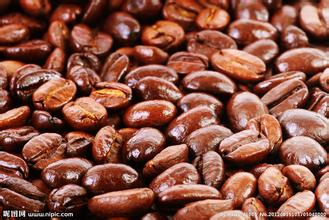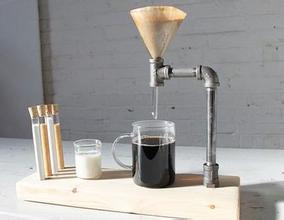Introduction to flavor description and taste treatment of sun-dried yellow bourbon coffee beans in South Minas, Brazil
Brazilian South Minas Sun-Sunned Yellow Bourbon Coffee Bean Flavor Description Taste Treatment Introduction
Although coffee is diverse, Brazilian coffee is suitable for the taste of the masses. For example: coffee produced in northern coastal areas has a typical iodine taste, reminiscent of the sea after drinking. This coffee is exported to North America, the Middle East and Eastern Europe. Another coffee that is interesting and worth pursuing is rinsed Bahia coffee. This coffee is not easy to find because Brazil is the world's largest coffee consumer after the United States, and much of the best coffee can only be found in its domestic market.
Brazil has been figuratively compared to the coffee world's "giants" and "kings." There are about 3.97 billion coffee trees, and small farmers now grow 75 percent of Brazil's coffee. Brazil has twice or even three times as many coffee producers as Colombia, the world's second-largest coffee producer.
Other types of Brazilian coffee, such as Rio, Parana, etc., can be produced in large quantities without too much care. Although the taste is rough, it is a kind of inexpensive coffee. Due to its distribution throughout Brazil, the solid quality varies, and there are its own standards (NO.2~NO.8 according to the number of impurities, NO.13~NO.19 according to the size of beans, divided into six grades according to taste). Almost all Arabica varieties are of good quality and stable prices, the most famous being "Santos de Brazil", which has been a necessity of blended coffee since ancient times and is familiar to the public. Recently, the rating of "Tolma Cup" is also very high.
Brazil has many large farms, operating endless coffee plantations, they use machines to harvest, and use machines to dry, automated efficiency is very high, as if coffee as a general agricultural material, completely abandoned flavor and disregard. As a result, many specialty coffee companies simply do not sell Brazilian beans, lest they demean themselves. Brazilian santos still occasionally appear in select coffee shops, but they are bourban santos rather than the cheaper flat bean santos. Santos is a descendant of the Bourbon species, hence the name of the Port of Santos exit. This coffee tree in the first three or four years of the beginning of the fruit, the beans produced small and curved, excellent flavor, known as "Bourbon Santos." After that, the beans become larger, flat shape, no longer curved, become "flat beans Santos", the flavor has been much less than before. In Taiwan, Brazilian coffee can be seen everywhere, but mostly flat beans Santos, in fact, Brazil still has good quality coffee beans, will be sold to the market under its own name, no longer known as "Brazilian coffee". Some farms still retain the old bourbon seed, the raw beans are small in size, curved, red in the center line, and marked with a red center. Bourbon beans taste full, thick aroma, like drinking old wine in general, is worth a try.

Important Notice :
前街咖啡 FrontStreet Coffee has moved to new addredd:
FrontStreet Coffee Address: 315,Donghua East Road,GuangZhou
Tel:020 38364473
- Prev

Price and Flavor description of Brazilian Yellow bourbon Coffee Variety producing area
Brazil yellow bourbon coffee price flavor description taste treatment method Brazilian national treasure coffee beans: Brazil yellow bourbon coffee raw bean source: Brazil yellow bourbon unique yellow cherry fruit product characteristics unique yellow cherry fruit, with cooked baking technology, showing a hint of lemon fragrance, soft acidity and bourbon species unique round and thick sweet feeling, is a good and cheap quality
- Next

Flavor description of Sidamo Lion King Coffee Bean varieties produced by grinding scale
The flavor description of Sidamo Lion King Coffee beans the outstanding representative of African water-washed coffee produced by grinding scale has always enjoyed a good reputation in the eyes of coffee connoisseurs all over the world. the rare washed high-quality Elaraby plus coffee is suitable for all degrees of roasting. it perfectly presents a fresh and bright aroma of flowers and fruits, beautiful and complete bean shape, which is incomparable to the general mocha. Have independence
Related
- Detailed explanation of Jadeite planting Land in Panamanian Jadeite Manor introduction to the grading system of Jadeite competitive bidding, Red bid, Green bid and Rose Summer
- Story of Coffee planting in Brenka region of Costa Rica Stonehenge Manor anaerobic heavy honey treatment of flavor mouth
- What's on the barrel of Blue Mountain Coffee beans?
- Can American coffee also pull flowers? How to use hot American style to pull out a good-looking pattern?
- Can you make a cold extract with coffee beans? What is the right proportion for cold-extracted coffee formula?
- Indonesian PWN Gold Mandrine Coffee Origin Features Flavor How to Chong? Mandolin coffee is American.
- A brief introduction to the flavor characteristics of Brazilian yellow bourbon coffee beans
- What is the effect of different water quality on the flavor of cold-extracted coffee? What kind of water is best for brewing coffee?
- Why do you think of Rose Summer whenever you mention Panamanian coffee?
- Introduction to the characteristics of authentic blue mountain coffee bean producing areas? What is the CIB Coffee Authority in Jamaica?

